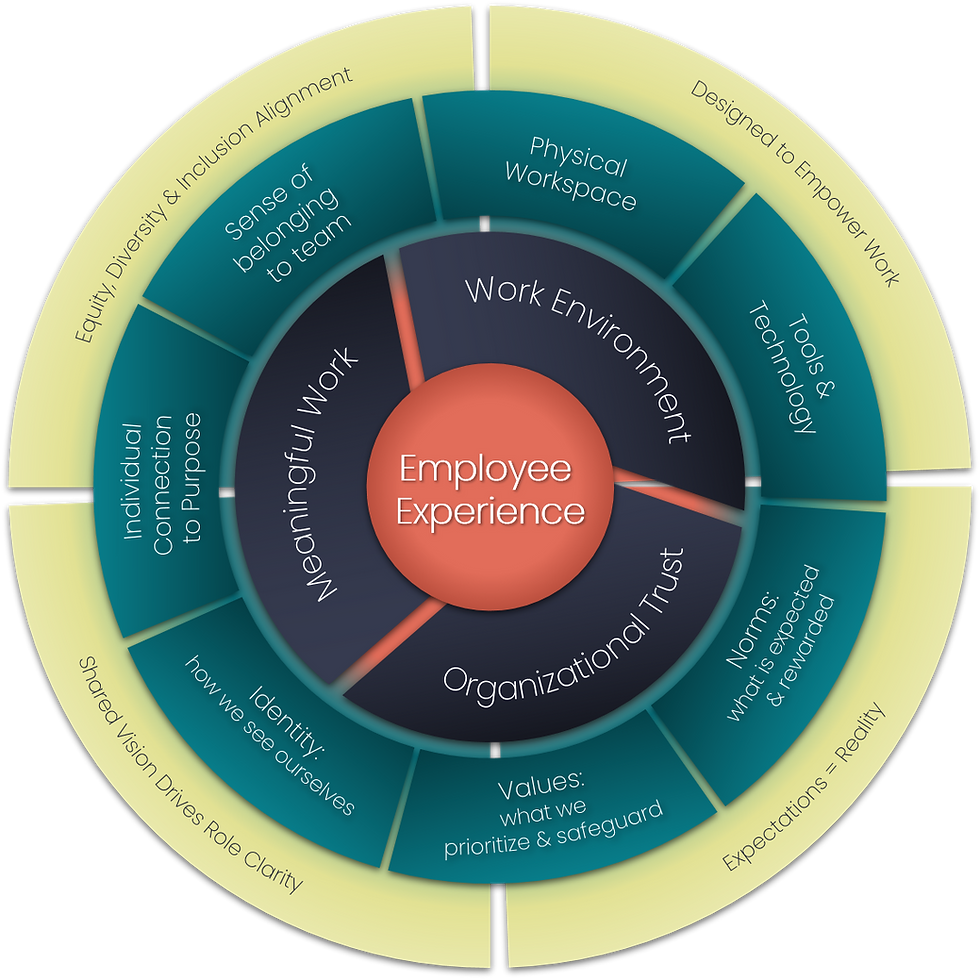How to Use a DEI Maturity Model
- Catherine Toney
- Apr 11, 2022
- 3 min read
Updated: Jul 22, 2022

So you want to become a more diverse, more equitable, and more inclusive organization. Great! So... what now?
Or, maybe over the past couple years you and your organization have been focusing hard on diversity, equity, and inclusion (DEI) with company-wide trainings and meetings on how to be more inclusive. It feels like you're moving the needle, but you are still getting feedback from employees that there's a long way to go... how to get there?
This is where a DEI Maturity Model comes into play! A DEI Maturity Model takes a good, hard look at the diversity, equity, and inclusion journey a company has gone on and defines where the company is at presently, as well as sets a path on where to go from here.
The model I took for the top of this page is from Deloitte. It breaks down the maturation of DEI into four main phases: Compliance, Programmatic, Leader-Led, and Integrated.
The Compliance phase is the very beginning of the journey. That's when the focus on DEI is on hitting targets, and the lack of diversity is seen as a problem to be managed and then solved. Equal Opportunity and Affirmative Action initiatives live here.
The Programmatic phase is where trainings and webinars happen. Diversity is still seen in terms of targets to hit, but there are more conversations happening on the ground, and voices from specific demographic groups in the company are amplified.
The third phase starts when initiatives are Leader Led. This is when initiatives are less about hitting targets and more about addressing systemic inequities within the company. Leadership is more involved, and goals come straight from the CEO and senior leadership.
The fourth phase is Integrated, which is marked by DEI being an organizational priority and inclusion is practiced company-wide, in all aspects of the organization.
Did you see the transition from reactive efforts to proactive? It happens right between phases 2 and 3. That's when diversity, equity, and inclusion efforts evolve from being mandated reactions (reactions to what, you ask? Employee feedback, cultural movement, and/or a simple directive from higher up to "fix it," are some examples) to a movement within the whole company, where diversity, equity, and inclusion are proactively sought out.
This transition is probably best illustrated by examining which department or entity is at the lead for each step. The leaders in the Compliance phase and the Programmatic phase are usually HR, Legal, and/or a team dedicated to DEI. But when we get to the Leader Led phase, that's when management involvement is becoming more visible. Finally at the Integrated phase, everyone has ownership in the progression of DEI. It's driven and sustained by the employees, with very explicit and constant support from leadership and HR.
If you're struggling to define where your organization is with its DEI journey, try plotting where you're at on a model such as this. You want to become a more diverse, more equitable, and more inclusive organization but you're just starting out? That's the Compliance phase. Company-wide trainings are moving the needle, but you know there's a long way to go? That's the Programmatic phase.
Then, once you've pinpointed where on the model you are currently, you've got a built-in roadmap telling you what needs to happen to get you to the next phase. It also helps you define what exactly your DEI strategy is, instead of defaulting to "our strategy is to be more diverse." Try these on for size:
"Our DEI strategy for this year is to roll out effective, informational trainings for our leadership and for our employees on how to be more inclusive" (this strategy would be an effort to move from the Compliance phase to Programmatic).
"Our DEI strategy is to increase leadership buy-in and to monitor our progress and report it back to leadership and to the company" (this strategy would be an effort to move from the Programmatic phase to Leader Led).
Anything that can help you achieve clarity around your goals and your strategy around DEI helps. A maturity model like Deloitte's is incredibly valuable, and I encourage you to use this as a starting place to tailor the model to your organization, then implement it to chart your own maturity.



Comments